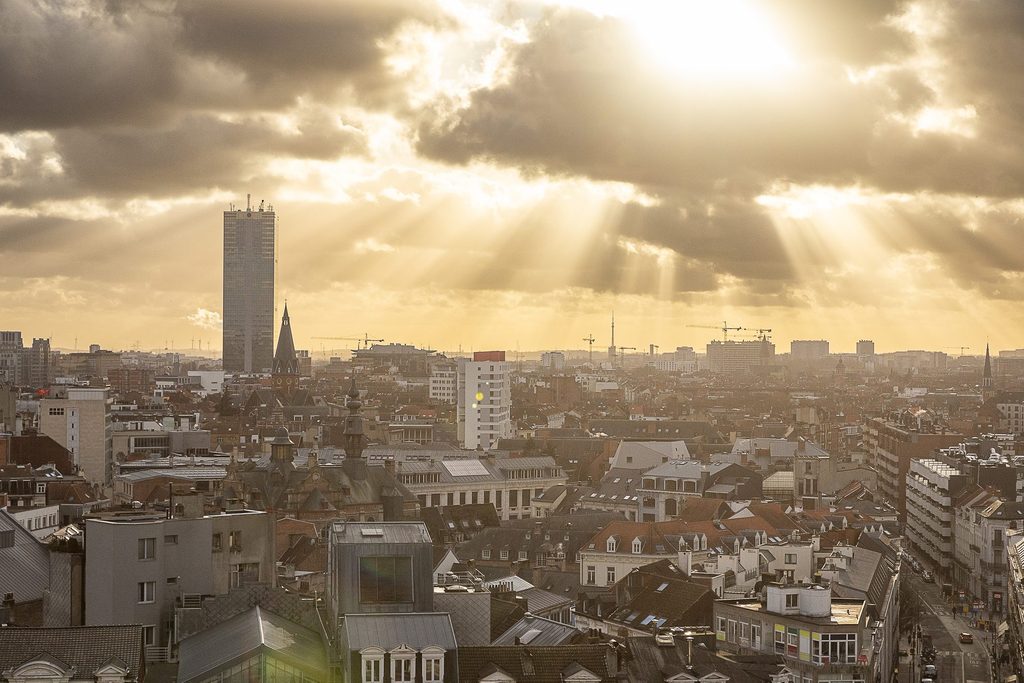A friend got in touch recently and said she was going to be in Brussels for the first time since we both arrived in the city just over 30 years ago.
“What’s changed?” she asked.
“Not a lot,” I replied, somewhat facetiously.
On the physical level, it’s true. Peer down on the city from Place Poelaert and it looks almost identical to three decades ago. Scaffolding still clads the Palais de Justice. There are no new breathtaking buildings like London’s Shard, Oslo’s opera house or Paris’ Louis Vuitton gallery. There’s not even anything to rival Santiago Calatrava’s Liège-Guillemins railway station or Zaha Hadid’s controversial extension to Antwerp’s Port Authority building. In fact, the last awe-inspiring addition to the Brussels skyline was the Atomium in 1958.
With the possible exception of Tour & Taxis, there have also been no monumental urban projects to rival the City of Arts and Sciences in Valencia or the redevelopment of the Kings Cross area in London.
But look beyond the landmarks and Brussels has completely changed in the last 30 years, and largely for the better, as I acknowledged in a follow-up message to my friend.
When we arrived in the Belgian capital, it was a drab and dingy city dominated by cars, cranes and crappy new architecture. “Brussels is a seriously ugly place, full of wet litter, boulevards like freeways and muddy building sites. It is a city of grey offices and faceless office workers, the briefcase capital of Europe,” wrote travel author Bill Bryson in 1991, when cars had just been banned from driving through the Grand Place. And referring to Brussels in the mid-1990s, I wrote in a Time Out guide to the city that “property sharks, unscrupulous speculators and laissez-faire town planners [had] conspired to make sure that large chunks of the centre looked like post-war Sarajevo.”
Wind forward three decades and Brussels is a city reborn.
With its new bike lanes, pedestrianised squares and car-free streets, it’s a much more liveable place – a view confirmed by a recent liveable cities index, in which Brussels jumped 22 places.
It is also much more international, with almost three-quarters of Brusselaars now coming from abroad or parents born abroad.
And while there may not have been glamorous new additions to the city, old buildings, squares and streets have been remodelled, redesigned and repurposed to make the centre more beautiful and more buzzing.
Old breweries like Wiels and Belle-Vue have been converted into modern art galleries – soon to be joined by the Centre Pompidou museum in the old Citroën showroom. Further up the canal, the once run-down Tour & Taxis site now hosts festivals and exhibitions and houses a food hall, shops, offices and apartments. And the former stock exchange has just reopened as a beer museum and restaurant with a glorious rooftop terrace.
Stand in front of the Bourse on the newly pedestrianised Boulevard Anspach today and you have to pinch yourself to believe this was a busy thoroughfare less than a decade ago. It’s the same story in the surrounding streets, where cafes have replaced cars and squares like De Brouckère and St Géry are no longer busy roundabouts.
And it’s not just the centre that’s changed. Go uptown and stroll along partially-pedestrianised Chausée d’Ixelles, swing by car-free Place St Boniface with terraces spilling on to the streets and head up to the totally transformed Place Fernand Cocq with its flower-beds and benches where cars once parked. Or if you prefer, have a beer on the lively Parvis St Gilles or a punnet of frites on Place Jourdan and tell me Brussels is the uninhabitable hellhole certain ex-US presidents and Flemish politicians say it is.
Of course the self-styled EU capital still has serious problems – recently highlighted by drug gang shootings and insecurity around the Gare du Midi train station. Homelessness, poverty and youth unemployment are shockingly high for one of Europe’s richest regions. Traffic congestion and air pollution are terrible. And the way the city is governed is infuriatingly inefficient. But despite these issues - faced by many European cities - most people who actually live in Brussels would agree it is getting better, not worse.
“I can’t believe how much nicer this city is,” my friend said as we sauntered around the spruced-up centre, her gobsmacked at how many people were out eating, drinking and walking. I suggested we check out the new bar on the roof of Brucity – the new City of Brussels administrative centre.
After a short wait for the lift, we arrived on the top floor to a panoramic view of the old town. We walked along the undulating terrace – said to be the longest in Europe – marvelling at the mellow vibes and magnificent views of the city. “New York would be envious of this,” said my friend. I nodded in agreement.
Contrary to my initial slightly snarky reply, a lot has changed in Brussels in the last 30 years. But it has changed in a very Brussels way – slowly, surreptitiously and with little hype or fanfare.

